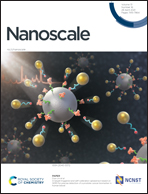Zeolitic octahedral niobium oxide with microchannels of seven-membered rings for photocatalytic H2 evolution from saline water†
Abstract
Zeolitic octahedral metal oxides (ZOMOs) are fully inorganic crystalline materials, mostly containing transition metals, and possess a defined framework as well as regular hollow channels. Therefore, they have significant application potential in many fields, particularly catalysis. Herein, we report the synthesis and characterization of zeolitic octahedral niobium oxides (ZOMO-NbOx) and the framework was made of {NbOx} polyhedra ({NbO6} octahedron and {Nb6O27} pentagon units). Microchannels consisting of 7-membered rings with ∼0.4 nm diameter were realized, and rarely reported plural {Nb6O27} units including dimers, trimers, and tetramers were discovered. Owing to the continuous hollow microporous structure that provides a large surface area as well as a shortened transfer path for charge carriers from bulk to the surface, considerably enhanced activities beyond pristine Nb2O5 were achieved towards photocatalytic H2 evolution from (saline) water. The results show a practical case of solo-Nb-based zeolitic materials, which expand the ZOMO family and provide further insights into the design and synthesis of efficient zeolitic semiconductors for artificial photocatalysis.



 Please wait while we load your content...
Please wait while we load your content...